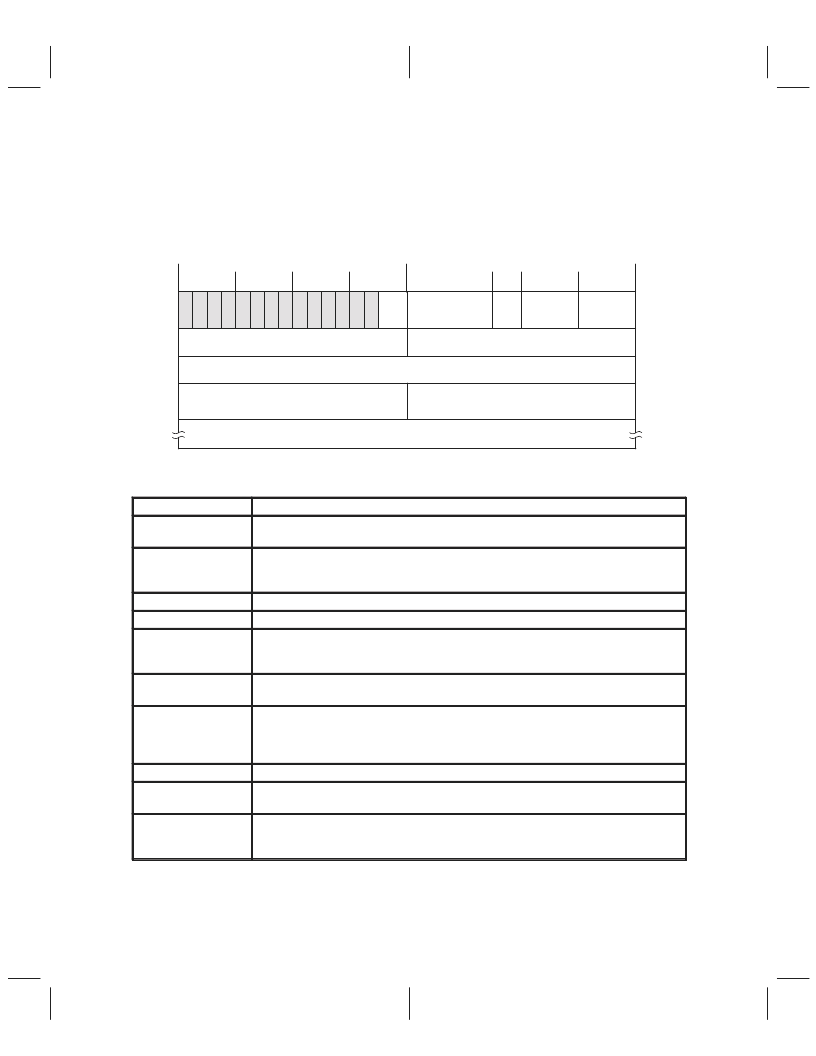- 您現(xiàn)在的位置:買賣IC網(wǎng) > PDF目錄382686 > TSB12C01APZ (Texas Instruments, Inc.) High-Speed Serial-Bus Link-Layer Controller PDF資料下載
參數(shù)資料
| 型號(hào): | TSB12C01APZ |
| 廠商: | Texas Instruments, Inc. |
| 英文描述: | High-Speed Serial-Bus Link-Layer Controller |
| 中文描述: | 高速串行總線鏈路層控制器 |
| 文件頁(yè)數(shù): | 32/59頁(yè) |
| 文件大小: | 275K |
| 代理商: | TSB12C01APZ |
第1頁(yè)第2頁(yè)第3頁(yè)第4頁(yè)第5頁(yè)第6頁(yè)第7頁(yè)第8頁(yè)第9頁(yè)第10頁(yè)第11頁(yè)第12頁(yè)第13頁(yè)第14頁(yè)第15頁(yè)第16頁(yè)第17頁(yè)第18頁(yè)第19頁(yè)第20頁(yè)第21頁(yè)第22頁(yè)第23頁(yè)第24頁(yè)第25頁(yè)第26頁(yè)第27頁(yè)第28頁(yè)第29頁(yè)第30頁(yè)第31頁(yè)當(dāng)前第32頁(yè)第33頁(yè)第34頁(yè)第35頁(yè)第36頁(yè)第37頁(yè)第38頁(yè)第39頁(yè)第40頁(yè)第41頁(yè)第42頁(yè)第43頁(yè)第44頁(yè)第45頁(yè)第46頁(yè)第47頁(yè)第48頁(yè)第49頁(yè)第50頁(yè)第51頁(yè)第52頁(yè)第53頁(yè)第54頁(yè)第55頁(yè)第56頁(yè)第57頁(yè)第58頁(yè)第59頁(yè)

4–2
4.1.2
The block-transmit format is shown in Figure 4–2. The first quadlet contains packet-control information. The
second and third quadlets contain the 64-bit address. The first 16 bits of the fourth quadlet contains the
dataLength field. This is the number of bytes of data in the packet. The remaining 16 bits represent the
extended_tCode field. (See Table 6–11 of the IEEE 1394-1995 standard for more information on
extended_tCodes.) The block data, if any, follows the extended_tCode. Block write responses are identical
to the quadlet write response and use the format described in subsection 4.1.3.
Block Transmit
0
1
2
3
4
5 6
7
8
9 10 11 12 13 14 15 16 17 18 19 20 21 22 23 24 25 26 27 28 29 30 31
spd
tLabel
rt
tCode
priority
destinationID
destinationOffsetHigh
destinationOffsetLow
dataLength
extended_tCode
block data
Figure 4–2. Block-Transmit Format
Table 4–2. Block-Transmit Format Functions
FIELD NAME
DESCRIPTION
spd
This field indicates the speed at which this packet is to be sent. 00 = 100 Mb/s, 01 = 200 Mb/s,
and 10 = 400 Mb/s, and 11 is undefined for this implementation.
tLabel
This field is the transaction label, which is a unique tag for each outstanding transaction
between two nodes. This is used to pair up a response packet with its corresponding request
packet.
rt
The retry code for this packet is 00 = new, 01 = retry_X, 10 = retryA, and 11 = retryB.
tCode
tCode is the transaction code for this packet (see Table 6–10 of IEEE 1394-1995 standard).
priority
The priority level for this packet. For cable implementation, the value of the bits must be 0.
For backplane implementation, see clause 5.4.1.3 and 5.4.2.1 of the IEEE 1394-1995
standard.
destinationID
This is the concatenation of the 10-bit bus number and the 6-bit node number that forms the
node address to which this packet is being sent.
destination OffsetHigh,
destination OffsetLow
The concatenation of these two fields addresses a quadlet in the destination node’s address
space. This address must be quadlet aligned (modulo 4). The upper four bits of the
destination OffsetHigh field are used as the response code for lock-response packets and
the remaining bits are reserved.
dataLength
The number of bytes of data to be transmitted in the packet.
extended_tCode
This field is the block extended_tCode to be performed on the data in this packet. See Table
6–11 of the IEEE 1394-1995 standard.
block data
The data to be sent. If dataLength is 0, no data should be written into the FIFO for this field.
Regardless of the destination or source alignment of the data, the first byte of the block must
appear in byte 0 of the first quadlet.
4.1.3
The quadlet-receive format is shown in Figure 4–3. The first 16 bits of the first quadlet contain the destination
node and bus id, and the remaining 16 bits contain packet-control information. The first 16 bits of the second
Quadlet Receive
相關(guān)PDF資料 |
PDF描述 |
|---|---|
| TSB12C01AWN | High-Speed Serial-Bus Link-Layer Controller |
| TSB12LV01APZ | High-Speed Serial-Bus Link-Layer Controller |
| TSB3055 | IC APEX 20KE FPGA 300K 240-PQFP |
| TSB41AB3 | IC APEX 20KE FPGA 400K 672-FBGA |
| TSB41BA3-EP | IC APEX 20KE FPGA 400K 672-FBGA |
相關(guān)代理商/技術(shù)參數(shù) |
參數(shù)描述 |
|---|---|
| TSB12C01AWN | 制造商:TI 制造商全稱:Texas Instruments 功能描述:High-Speed Serial-Bus Link-Layer Controller |
| TSB12LV01A | 制造商:Texas Instruments 功能描述: |
| TSB12LV01AIPZ | 制造商:TI 制造商全稱:Texas Instruments 功能描述:IEEE 1394 (Firewire) Bus Interface/Controller |
| TSB12LV01APZ | 制造商:TI 制造商全稱:Texas Instruments 功能描述:High-Speed Serial-Bus Link-Layer Controller |
| TSB12LV01B | 制造商:TI 制造商全稱:Texas Instruments 功能描述:IEEE 1394-1995 HIGH SPEED SERIAL BUS LINK LAYER CONTROLLER |
發(fā)布緊急采購(gòu),3分鐘左右您將得到回復(fù)。